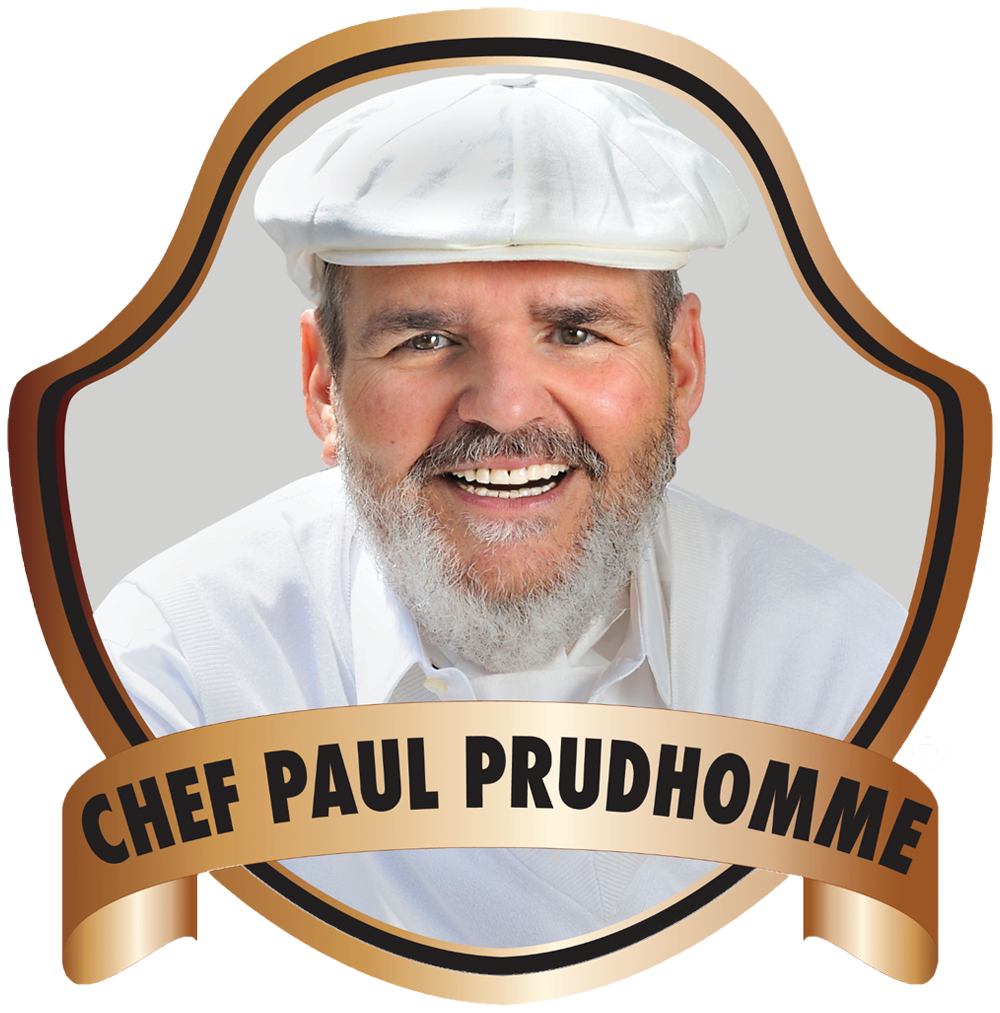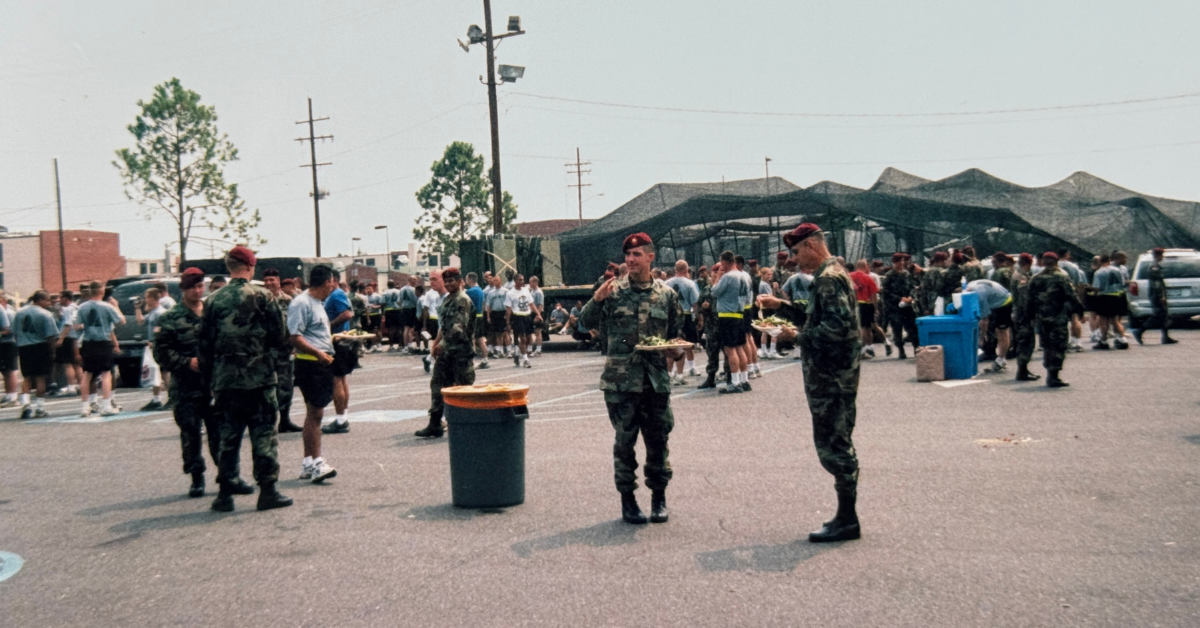By Sue Strachan
It was about three weeks after Hurricane Katrina had made landfall on Aug. 29, 2005, in Plaquemines Parish, Louisiana. Three weeks after the flooding from the storm surge or man-made reasons, such as the 17th Street Canal and the Industrial Canal levees breaching in Orleans Parish. Damage from strong winds or spot tornadoes added to the bleak landscape.
New Orleans was bruised, injured — and, to some national pundits, ruined beyond repair — but not ready to give up.
It was during this post-storm maelstrom of uncertainty that Chef Paul Prudhomme went into action. Originally from Opelousas, Louisiana, he was the owner of K-Paul’s Louisiana Kitchen, his internationally famed restaurant, and Chef Paul Prudhomme Magic Seasoning Blends, his spice and food company.
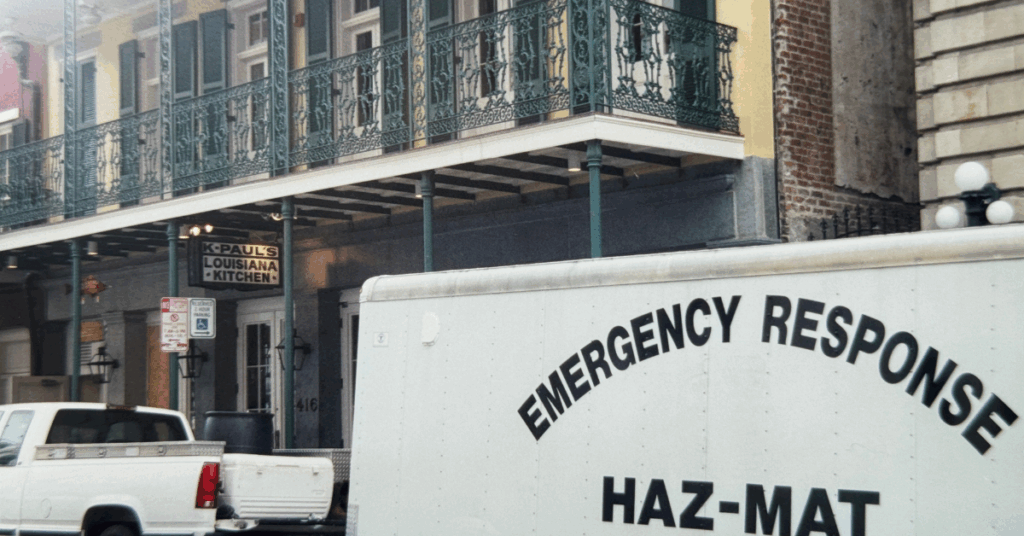
So when two 18-wheel trucks filled with non-perishable food, cooking equipment and generators arrived in the Magic Seasonings parking lot on a blazingly hot September afternoon, to many it seemed like a miracle.
Prudhomme had evacuated before the storm to Pine Bluff, Arkansas. He was staying at friend Dr. Bo Busby’s hunting camp, and the two teamed up to start a food drive to head to New Orleans. Prudhomme had also paid out of his pocket $140,000 for the eight mobile homes that had arrived, joining a flatbed of washers and dryers a few days before the trucks.
“It wasn’t even a choice for me,” said Prudhomme in a Florida Times-Union article from 2006. “It was something I had to do. I’ve got people who have worked for me for 28, 29 years. What are they going to do? They’re family, not much different than a brother or sister. What is mine is theirs and vice versa.”
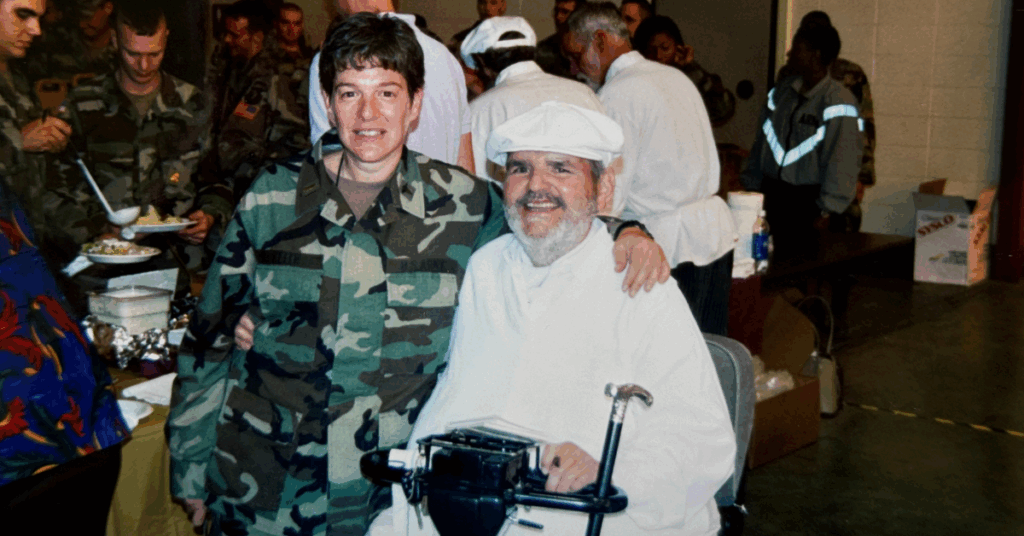
Marty Cosgrove, currently CEO and president of Chef Paul Prudhomme Magic Seasonings, then the director of sales for K-Paul’s catering division, was among those helping Prudhomme make contact with displaced employees, figuring out the future of the businesses, finding out what they could do to help while dealing with what was then almost non-existent cell phone service due to the towers being damaged.
Family, friends and vendors were also among those trying to get in touch.
“Many of the vendors we used at K-Paul’s or that we had a relationship with at Magic Seasonings started calling and asking what they could do, what could they send,” said Cosgrove.
Supplies soon arrived, ranging from granola bars to frozen chickens. Magic Seasonings, located in Harahan in neighboring Jefferson Parish, had electricity and the coolers to keep perishable items.
Right away, the “camp” in Magic Seasonings’ rear parking lot became a hub for employees who needed a place to live and wash clothes if their homes had been damaged, trade evacuation and other storm stories, and eat.
“We had a 40-gallon kettle, pots and pans, and equipment under a tent,” said then K-Paul’s Executive Chef Paul Miller. “We just started cooking or we would go somewhere to cook for people.”
On the menu was jambalaya, red beans and rice, pork loin, potato salad, banana pudding, pralines and “of course we did gumbo, even though it was hot,” said Cosgrove. “Because gumbo is comfort food.”
“We fed everybody,” said Cosgrove, who had evacuated to Opelousas, Louisiana. “Whether it was St. Bernard Parish, Central City or the Urgent Care right around the corner from the warehouse, we would go and drop off food or serve food.”
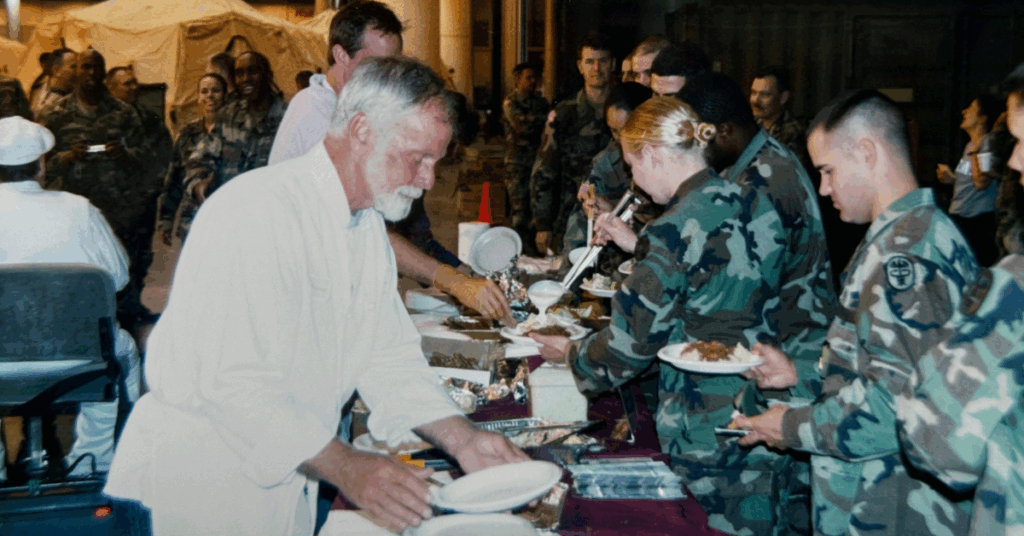
The on-site crew, which now included Chef Paul who was staying in one of the trailers, fed first responders, including the military; relief workers and displaced residents at the Ernest N. Morial Convention Center, which at that time had been converted from an unofficial evacuation center into temporary medical facilities and where some military units were based helping with humanitarian and security efforts.
Among the other locations Prudhomme and his team went to was Algiers to feed the 82nd Airborne Division, including its Third Brigade, which did search and rescue operations with FEMA. It was here that Prudhomme, who loved music, wanted to “make it an experience,” said Cosgrove, and hired a keyboard player to entertain the troops.
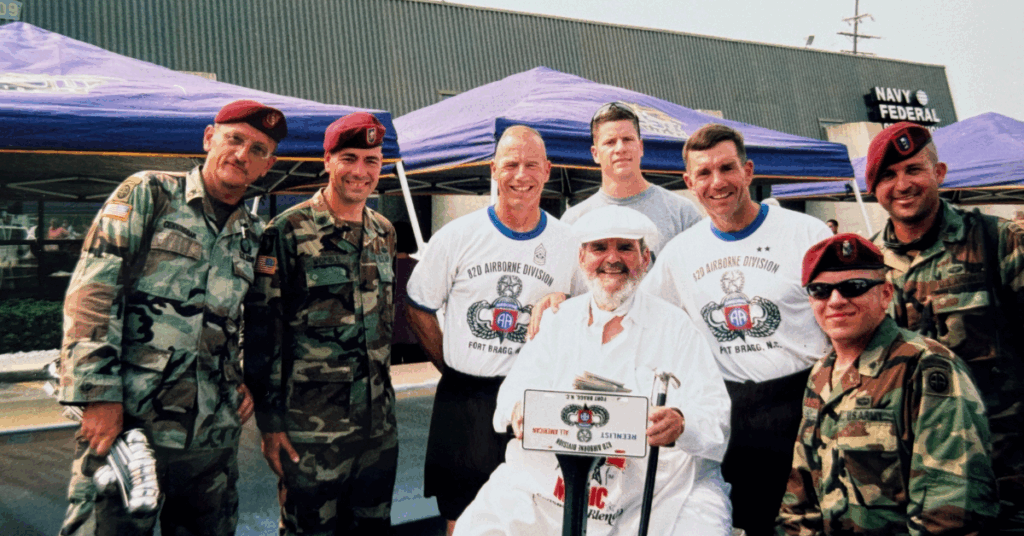
By the end of September, the crew had cooked almost 8,000 meals, going wherever people needed to be fed.
“That’s my job, to lift people up with great food,” Prudhomme said in a Times-Picayune article from October 2005.
While doing this, they were also cleaning out and prepping K-Paul’s Louisiana Kitchen, which had minimal damage — as we “battened down the hatches” before the storm, said Cosgrove. And as it had no freezers (where meat and other food could go bad while there was no electricity), there wasn’t the amount of clean-up that many other establishments had to do. Building damage included the roof over part of a dining room, warped floors and a broken balcony.
Miller says they often experienced 12-hour days starting at 6 a.m. and “everyone did everything, from prep to washing dishes.”
By early October, K-Paul’s was one of the first restaurants to re-open with employees continuing their multi-tasking of jobs. Prudhomme also continued the music, hiring a band to play to create a positive energy at the restaurant. “Chef Paul was just adamant about having a band play at K-Paul’s every night,” said Cosgrove.
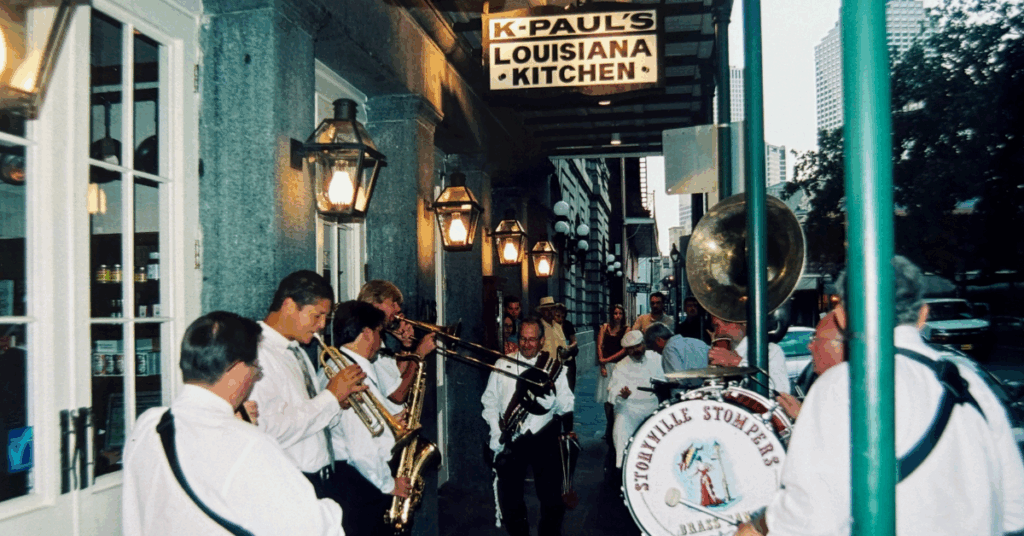
Bonnie Boyd, founder and CEO of BBC Events, an event and destination management company, knew she could reach out to Chef Paul Prudhomme when she was asked to organize the Oct. 15 dinner for an ophthalmology conference that could not cancel its meeting in New Orleans.
Less than six weeks after Katrina, she found rooms at Royal Sonesta Hotel in New Orleans. Next challenge: how to end the small meeting on a high note?
After talking to Chef Paul and Cosgrove about having the dinner at K-Paul’s, Boyd said she thought, “How am I going to get them from the hotel to the restaurant?” Fortunately, Boyd had the personal phone numbers of local musicians and called them to form a jazz band to lead a second-line from the hotel to the restaurant. “We didn’t ask for a permit from the police. We marched them over and the clients had a wonderful time.”
It was the first corporate event in the city post-Katrina, which importantly symbolized that New Orleans was coming back.
Boyd later called upon Prudhomme to go with her company to New York in January 2006 to the InterContinental New York Barclay Hotel, where they hosted a reception to help with post-Katrina recovery.
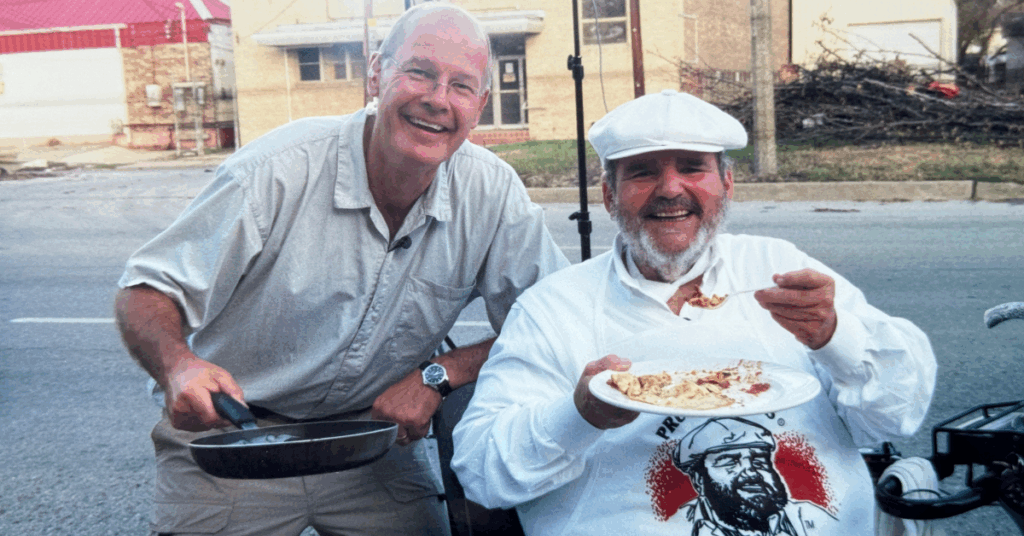
Prudhomme, who passed away in 2015, was honored with Bon Appétit’s Humanitarian of the Year award in 2006 for his efforts after the storm.
“He never did it for the honors,” said Cosgrove about Prudhomme’s post-Katrina relief work — or any of his charitable endeavors.
“That was the cloth of which Paul was cut from, part of his upbringing — that you take care of people,” Cosgrove continues. “He was the youngest of 13, from a huge family, so whether you’re his blood family or his work family, he did it because it was the right thing to do. You take care of people.”
Cosgrove noted that even though Prudhomme was not from New Orleans, he acknowledged what it had done for him and his career.
“I felt a very strong responsibility to help the city come back,” said Prudhomme in an article in the Florida Times-Union from 2006.
“He led from his heart,” said Cosgrove.
Sources:
“May the Good Times Roll Once Again: The Owner of a New Orleans Institution is Doing his Best to Bring the Flavor back to the Crescent City,” by Dan MacDonald, Florida Times-Union, Sept. 7, 2006
“The Army Response to Hurricane Katrina,” By Roberta Bertholot, U.S. Army Military History Institute, U.S. Army website, Sept. 10, 2010. https://www.army.mil/article/45029/the_army_response_to_hurricane_katrina
“Chef Paul Shows Big Easy Spirit,” CBS News, Sept. 29, 2005
https://www.cbsnews.com/news/chef-paul-shows-big-easy-spirit/
